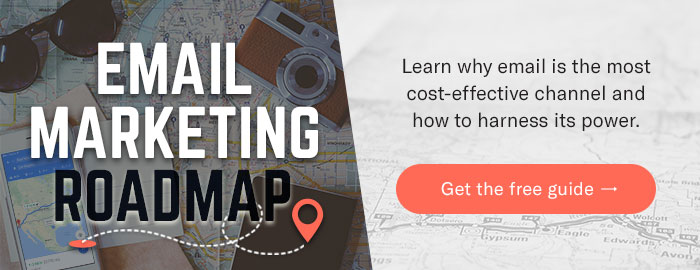 Lead nurturing for small business owners is a practice used by marketers and businesses to help guide potential prospects (and even current customers) to making the decision to do business with you. Whether this is through email, social media, trade shows, or direct mail, the idea is to have multiple touch points that eventually cause you to respond. Without lead nurturing, you are leaving a lot of potential business profits on the table.
Lead nurturing for small business owners is a practice used by marketers and businesses to help guide potential prospects (and even current customers) to making the decision to do business with you. Whether this is through email, social media, trade shows, or direct mail, the idea is to have multiple touch points that eventually cause you to respond. Without lead nurturing, you are leaving a lot of potential business profits on the table.
More so today than a few years ago, these lead nurturing touches have become increasingly difficult to create. From email spam filters to ad blockers to social media blocking, getting in the door with potential customers is increasingly difficult. In short, these tools to help mute businesses have caused a drastic shift in how to approach consumers.
No longer can a business shout a message at consumers. Now, thanks to content marketing, businesses are beginning to help their customers and prospects, rather than sell to them. This is done through emails with interesting content, blog posts to help answer questions, and social media updates that help humanize the brand image. All of this put together gives you a well-rounded marketing strategy that aims to keep your business top-of-mind, but in a good way.
Value Point #1: Helps You Break The Ice
Companies that excel at lead nurturing generate 50% more sales ready leads and at 33% lower cost too (Hubspot).
Whether you’re getting a list of leads from a third party source or simply cold-calling from a database, one thing is for sure…it’s a lot hard to have a conversation when someone doesn’t know who you are. With lead nurturing tactics like email marketing, you’ll be able to come in with a soft approach, slowly introducing yourself through great content that people find to be valuable. So nurture these relationships until they’re ready to do business.
Value Point #2: Not Everyone Is Ready To Do Business
The probability of selling to an existing customer is 60-70%, compared to the 5-20% probability of selling to a new prospect. (Marketing Metrics).
You can use the same lead nurturing approach with your past clients too. Get them to come back to do more business with you by being that helpful, professional voice in their inboxes and social media feeds. Lead nurturing is a continual process because when you market to your existing customers, you’re also potentially marketing to their friends and connections too.
Value Point #3: Best Use Of Your Time And Money
Lead nurturing helps you make the most of the money that you spend on getting new customers in the door. Whether you’ve purchased a lead list or picked up someone’s business card at a networking event, you need to make every communication touch point count. The best benefit of lead nurturing is that when done correctly, it can be an automated process.
Companies that automate lead management see a 10% or greater increase in revenue in 6-9 months (Hubspot).
Why waste your time and energy trying to cold call new prospects or manage a database of past clients when lead nurturing can be put in place to make sure you’re actively managing those people…automatically.
Lead nurturing can be a lot of work to setup and fully utilize, but it’s something that all small business owners should understand. The verticals we work with do have much longer sales cycles than other businesses, but they greatly benefit from a long-term engagement strategy you get from lead nurturing. Nurture the leads that you have to become brand evangelists and give you new leads time to grow before you go and pluck them.
And as always, if you’re not up to the challenge, we have plenty of resources to help you out with your own lead nurturing programs for your small businesses.



![Better Email Etiquette Equals Better Marketing Results [16 Rules]](https://www.outboundengine.com/wp-content/uploads/shutterstock_411184843-1-400x250.jpg)

